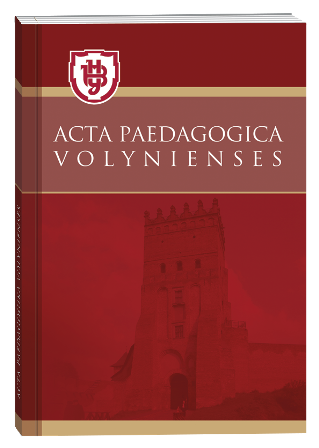THE ROLE OF AI IN ENGLISH LANGUAGE TEACHING WITHIN TECHNICAL UNIVERSITIES
DOI:
https://doi.org/10.32782/apv/2025.3.11Keywords:
artificial intelligence, English language teaching, English for Specific Purposes, technical university, human-AI collaborationAbstract
The modern technological shift greatly changes various aspects of people’s lives, including education. This transformation also influences the way knowledge is disseminated, acquired, and evaluated, including the rapid integration of artificial intelligence into traditional learning methods. Modern artificial intelligence offers advanced tools for personalized learning, automated assessment, and interactive content delivery. This raises a critical and timely question: can AI truly replace human English language teachers, especially in the specialized environments of technical universities? This article aims to address this question through a comprehensive analysis. The research first analyses the current state of artificial intelligence implementation in language learning, illustrating its most impactful applications and functionalities by reviewing recent research. It also states the diverse and often underestimated responsibilities, unique contributions, and inherent pedagogical value that English language teachers bring to technical university settings. Finally, the study critically evaluates the strengths and limitations of artificial intelligence against human roles. Our findings indicate that while AI has significant advantages, such as 24/7 accessibility, instant and personalized feedback, data collection for tailored instruction, and automation of routine tasks, it has limitations that currently prevent it from fully replacing human English language teachers in technical universities. AI does not provide a genuine understanding, empathy, and the ability to handle complex, unstructured human communication. Furthermore, AI cannot complete the human teacher’s role in motivation, providing socio-emotional support, or introducing cultural context that is essential for effective communication. AI also cannot replace human teachers in curriculum design, authentic assessment, mentorship, and adapting to unforeseen classroom dynamics. The article concludes that AI cannot completely replace human English language teachers, instead, a more realistic and beneficial future lies in a human-AI collaboration.
References
Baker R. S., Siemens G. Educational Data Mining and Learning Analytics. In R. K. Sawyer (Ed.), The Cam- bridge Handbook of the Learning Sciences, 2014. Pp. 253–274. DOI:10.1017/CBO9781139519526.016. URL: https://www.researchgate.net/publication/316628053_Educational_data_mining_and_learning_analytics
Bobula M. Generative artificial intelligence (AI) in higher education: a comprehensive review of challenges, opportunities, and implications. Journal of Learning Development in Higher Education, 2024. Vol. 30. https://doi.org/10.47408/jldhe.vi30.1137
Carrier M. Automated Speech Recognition in language learning: Potential models, benefits and impact. Training Language and Culture, 1(1), 2017. Pp. 46–61. https://doi.org/10.29366/2017tlc.1.1.3
Daud A., Aulia A. F., Muryanti M., Harfal Z., Nabilla O., Ali H. S. Integrating Artificial intelligence into English language teaching: A Systematic review. European Journal of Educational Research. 2025, 14(2). Pp. 677–691. https://doi.org/10.12973/eu-jer.14.2.677
Dizon G., Gold J. Exploring the effects of Grammarly on EFL students’ foreign language anxiety and learner autonomy. The JALT CALL Journal. 2023. 19(3). Pp. 299–316. https://doi.org/10.29140/jaltcall.v19n3.1049
Evers K., Chen S. Effects of an automatic speech recognition system with peer feedback on pronunciation instruction for adults. Computer Assisted Language Learning. 2020. 35(8). Pp. 1869–1889. https://doi.org/10.1080/09588221.2 020.1839504
Ghufron M. A., Rosyida F. The role of Grammarly in Assessing English as a Foreign Language (EFL) writing. Lingua Cultura. 2018. 12(4). Pp. 395–403. https://doi.org/10.21512/lc.v12i4.4582
Golub T., Kovalenko O., Nazarenko O., Zhygzhytova L. The analysis of the usage of AI services for text generation in higher education. Academic Studies. Series “Pedagogy”. 2025, Vol. 1. Pp. 25–31. https://doi.org/10.52726/as.pedagogy
Kanta S. M. The role of artificial intelligence in personalized learning. ShodhKosh Journal of Visual and Performing Arts. 2023. Vol. 5(7). https://doi.org/10.29121/shodhkosh.v5.i7.2024.4810
Miranty D., Widiati U., Cahyono B. Y., Sharif T. I. S. T. The effectiveness of Grammarly application and teacher feedback for undergraduate EFL students’ writing skills. Innoeduca International Journal of Technology and Educational Innovation, 2025. 11(1). Pp. 108–133. https://doi.org/10.24310/ijtei.111.2025.2052
Su N. Y. A correlation study of Automated Writing Evaluation System (Grammarly) and Chinese EFL learners’ writing Self-Efficacy in their Self-Regulated Learning. Deleted Journal. 2024. 20(3). Pp. 1874–1895. https://doi.org/ 10.52783/jes.3904
Syuhra M. N., Chandra N. E., Rosalina E. Artificial intelligence in English Language teaching: A Systematic Literature review of tools, impact, and challenges. Voices of English Language Education Society. 2025. 9(1). Pp. 193–205. https://doi.org/10.29408/veles.v9i1.29745








